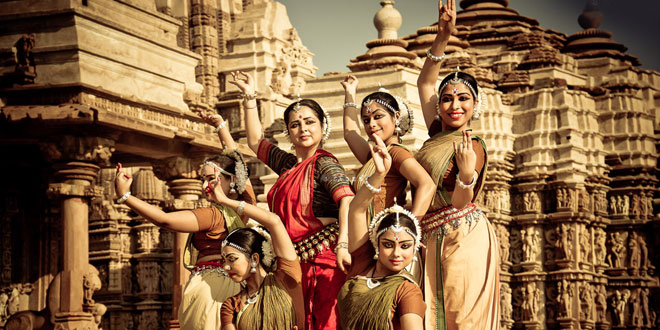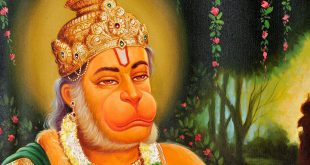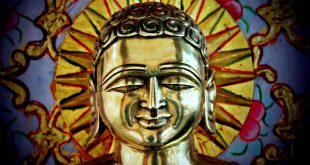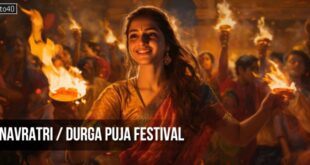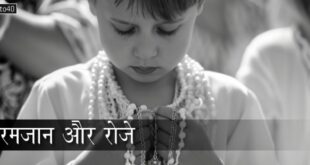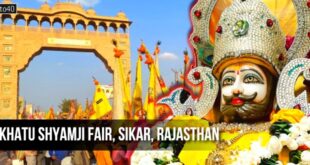Khajuraho Dance Festival (50th Edition): Event Name
Category: Dance & Music Festival
Event Date: 20 – 26 February, 2024
Location: open-air auditorium, Chitragupta & Vishwanatha Temple, Khajuraho, Chhatarpur District, Madhya Pradesh, India
Khajuraho Dance Festival: खजुराहो नृत्य समारोह
Khajuraho Dance Festival – Once the religious capital of Chandela dynasty, one of the powerful Rajput dynasties of Central India, Khajuraho is now famous for it’s enchanting temples and it’s legendary Khajuraho Dance Festival.
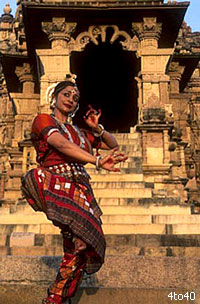 The week-long festival of classical dances is held every year in February / March against the spectacular backdrop of the magnificently lit temples. This cultural festival highlights the richness of the various Indian classical dance styles such as Kathak, Bharathanatyam, Odissi, Kuchipudi, Manipuri and Kathakali with performances of some of the best exponents in the field. Modern Indian dance has also been added recently.
The week-long festival of classical dances is held every year in February / March against the spectacular backdrop of the magnificently lit temples. This cultural festival highlights the richness of the various Indian classical dance styles such as Kathak, Bharathanatyam, Odissi, Kuchipudi, Manipuri and Kathakali with performances of some of the best exponents in the field. Modern Indian dance has also been added recently.
The dances are performed in an open-air auditorium, usually in front of the Chitragupta Temple dedicated to Surya (the Sun God) and the Vishwanatha Temple dedicated to Lord Shiva, belonging to the western group.
Along with the renowned performers, a number of craftsmen display their crafts to the visitors. There is an open market where local articles are there for sale. Khajuraho Dance Festival is conducted as a celebration of the cultural heritage of Khajuraho temples and preserving it for the coming generation.
Khajuraho Dance Festival is held every spring in the town of Khajuraho in order to celebrate the glory of the temples. It is believed that classical dance basically comes from the Hindu temples and attained it’s maturity. This Festival is a cultural festival for the celebration of the Indian arts- dance and music handling down from generation to generation. The Khajuraho Festival of Dances shows the best classical dancers and dances in the country. It is held during the month of March from 6th to 12th. Different classical dances are presented during this festival, like the – Kathak, Bharatnatyam, Kuchipudi, Odissi, Manipuri etc.
The main idea behind Khajuraho Dance Festival is to make the cultural heritage of Khajuraho relevant to the present society and preserving it for the coming generation. On this occasion a number of renowned artists and craftsmen participates in the workshop and seminar and present their art to the numerous visitors and tourist. And during this seven days festival, there is also a market in an open field where the visitors can get the entire local made articles of Khajuraho. This festival is known not only in our country but also to the outside world at large.
खजुराहो नृत्य समारोह 20 से 26 फरवरी 2024:
नेपथ्य में मंदिर की प्रस्तर मूर्तियां, ऊपर खुला आसमान, सामने देश-विदेश से पधारे सुधि कला रसिक और मध्य में रचे गए मंच पर शिव की परंपरा को साकार करते साधनारत कलाकारों का अविस्मरणीय प्रस्तुतीकरण। कुछ ऐसा ही दृश्य बनता है जब खजुराहो नृत्य महोत्सव की बात होती है। नृत्य की गरिमा और शास्त्रीयता को समर्पित यह आनंद उत्सव अपने 50 वें वर्ष में प्रवेश कर चुका है। खजुराहो नृत्य महोत्सव की शुरुआत वर्ष 1975 में की गई थी और तब से आज तक मध्य प्रदेश शासन के संस्कृति विभाग अंतर्गत उस्ताद अलाउद्दीन खां संगीत एवं कला अकादमी द्वारा इसका सफल आयोजन निरंतर किया जाता रहा है। भारत में कला का स्वरूप परंपरानिष्ठ संस्कार के समान है जो कठोर साधना से पल्लवित हो कलाकार के स्व की अभिव्यक्ति करने के साथ समकालीन सांस्कृतिक परिदृश्य का भी वर्णन करता है। हमारी संस्कृति में नृत्य मात्र एक नयनाभिराम प्रस्तुतीकरण ना होकर कलाकार के गहन चिंतन को साकार करने वाला एक सार्थक प्रयास है।
खजुराहो नृत्य समारोह को शुरू करने का उद्देश्य मात्र शास्त्रीय नृत्य का संरक्षण नहीं बल्कि उससे इतर शास्त्रीय नृत्य के माध्यम से वह बात भी कही जाना थी जो नृत्य के माध्यम से कला के परमोत्कर्ष की अनुभूति कला रसिकों को करवाता है। तब से लेकर आज तक यह नृत्य समारोह खजुराहो के सुप्रसिद्ध मंदिरों के प्रांगण में आयोजित होता आ रहा है। खजुराहो नृत्य समारोह में अब तक भारत की सभी प्रमुख शास्त्रीय नृत्य शैलियों जैसे भरतनाट्यम, ओडीसी, कथक, मोहिनीअट्टम, कुचिपुड़ी, कथकली, यक्षगान, मणिपुरी आदि के युवा और वरिष्ठ कलाकार अपनी कला की आभा बिखेर चुके हैं। समारोह के माध्यम से नृत्य में शास्त्रीयता की गरिमा बनाए रखने के साथ नवाचार करने का प्रयास किया जाता रहा है। समारोह मात्र नृत्य प्रस्तुतीकरण तक सीमित ना रह कर नृत्य एवं अन्य कलाओं के विभिन्न आयामों पर भी खुलकर चर्चा एवं विचार करने का अवसर प्रदान करता है। समारोह अंतर्गत आयोजित की जाने वाली अन्य गतिविधियां जैसे आर्ट मार्ट, हुनर, नेपथ्य, कलावार्ता आदि कला के अन्य पक्षों पर भी खुलकर विचार करने का अवसर प्रदान करती हैं। किसी भी कला रसिक के लिए खजुराहो नृत्य समारोह एक ऐसी दृश्यावली है जिससे उसे अपने भीतर उठने वाले हर रचनात्मक ज्वार भाटा का उत्तर मिल सकता है।
About Khajuraho:
The past of Khajuraho is shrouded with mystery and conjecture. In the midst of the wilderness full of ferocious animals, there is the small town of Khajuraho standing alone in its solitude with its ancient temples. With hardly any written records and rare references to its origin, the history of Khajuraho has become trapped in the mythical folklore of the region. The beautiful artwork of these temples have gained the attention of the art lovers all over the world but the real purpose behind their construction is a mere guess work of the intellectuals. The These temples fire the imagination of the visitors with innumerable questions such as their significance and their position in the society, the reason behind using these temples as an art gallery, the whereabouts of the said kingdom and why only the temples have been found and there are no ruins of the mansions and palaces in the nearby area. The graphic representation of sexual and erotic postures in a religious place is bewildering too.
However, if the myth it is to be believed, Khajuraho was known as ‘Khajur-vahika’ or ‘Khajjurpura’ in the ancient times because of its golden date palms (known as ‘khajur’) that lined the gates of this city. It has been mentioned in the Mahoba-khand of Chandbardai’s (the famous medieval court poet) ‘Prithviraj Raso’ that Hemraj, the royal priest of Kashi (the old name for Varanasi), had an exceptionally beautiful daughter named Hemvati, who was unfortunately a child widow. One summer night, while she was bathing in a lotus-filled pond, the Moon God was so dazed by her beauty that he descended to earth in human form full of lust and passion and ravished her. Later, he repented when the distressed Hemvati threatened to curse him for ruining her honor and dignity and blessed her with a valiant son who would later become a king and build the temples of Khajuraho. Hemvati left her home and gave birth to a brave and strong boy child in the tiny village of Khajjurpura. The child was named Chandravarman and it is said that by the time he was 16 years old, the glorious boy was strong and skilled enough to kill tigers or lions with his bare hands. With the blessings of the Moon God, his father he became a mighty king and built the fortress at Kalinjar. Then heeding to his mother’s wishes he built 85 legendary temples surrounded by lakes and gardens at Khajuraho and also performed the bhandya yagya, to wash away the sins of his mother.
Yet another version of the above legend raises Hemvati as a dutiful daughter who sacrificed all her happiness and dignity for her father. Mani Ram, the royal priest of Kalinjar, miscalculated once and declared the dark night as the full moon night or Purnamasi in front of the king. Hemvati, his widowed daughter could not bear the possibility of any stigma on her father’s reputation and prayed to the Moon God to uphold the word of the priest. However, she had to pay a heavy price for her wish being granted when the Moon God who was smitten by the lady’s beauty ravished her in return for his favor. When Mani Ram came to know of this entire incident, he was so ashamed and grief-stricken that he cursed himself and turned into a stone. However, Hemvati got pregnant with the tryst and gave birth to a virtuous son by the name of sage Chandrateya who is believed to be the founder of the Chandela dynasty. Chandelas worshipped the Mani Ram-turned-stone as Maniya Dev.
 Kids Portal For Parents India Kids Network
Kids Portal For Parents India Kids Network
